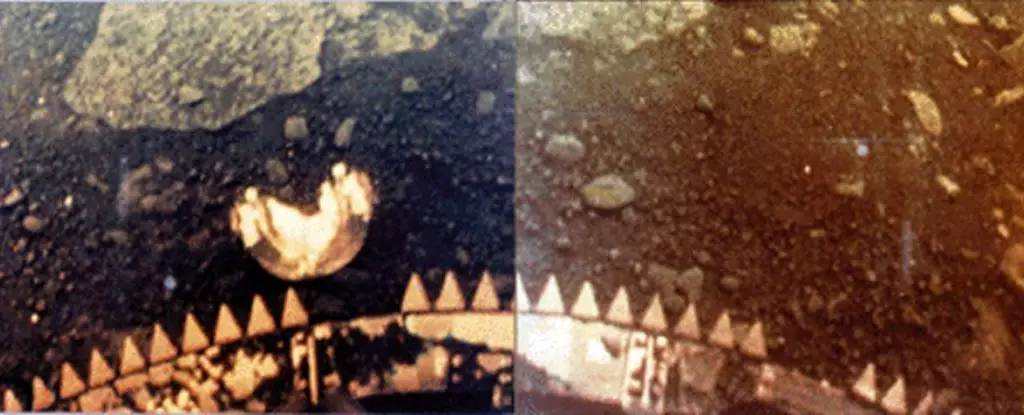Venus, our neighboring planet, has often been dubbed as Earth’s twin due to its similar size, composition, and density. However, upon closer examination, the stark differences between the two become apparent. While Earth teems with life and offers a hospitable environment, Venus presents an entirely contrasting picture. Enveloped in a dense, toxic atmosphere filled with acidic clouds, this celestial body is utterly inhospitable and harbors conditions that would instantly obliterate any form of life. The runaway greenhouse effect on Venus traps heat within its atmosphere, resulting in an average surface temperature of a scorching 464 degrees Celsius (867 degrees Fahrenheit). Moreover, the atmospheric pressure on Venus is nearly 100 times that of Earth, leading scientists to grapple with the challenge of designing a lander capable of surviving such hostile conditions.
Unbelievably, despite the formidable obstacles, data from the Venusian surface does exist. The Soviet space program, known as Venera, accomplished an extraordinary feat by sending a series of 16 probes to Venus between 1961 and 1984. This groundbreaking endeavor marked the first successful entry into the atmosphere of another planet, with Venera 3 achieving this milestone in 1966. Subsequently, in 1970, Venera 7 became the first probe to make a soft landing on another planet. Although none of the eight Venera probes that landed on Venus endured for more than two hours, Venera achieved another remarkable feat by transmitting images and sounds from an alien world back to Earth.
To this day, Venera remains the sole program to have captured images and audio directly from the surface of Venus. Venera 13 and 14 recorded sound, while Venera 9, 10, 13, and 14 captured panoramic images of their landing sites. While the data received during these missions may appear relatively grainy by today’s standards, it is crucial to consider the challenging circumstances under which the probes operated. Nonetheless, recent advancements in image processing technology have enabled researchers to revisit the nearly 50-year-old data and unveil intriguing pictures of Venus. These enhanced images depict a mesmerizing golden-hued, alien world that exudes an aura of forbidding mystery, even without the knowledge of its extreme temperatures, oppressive pressure, and lethal substances.
The radiant golden hue permeating Venus is a consequence of sunlight filtering through its atmospheric veil and casting a tint across the planet’s surface. Innovative image processing techniques employed at Brown University have shed light on the true nature of Venus’ terrain. It has been revealed that the rocks and dirt on the planet possess a dark grayish hue. This distinct coloration arises from the formation processes that have shaped Venus over time. Volcanic features dominate its surface, suggesting the possibility of ongoing volcanic activity. The dark rocks observed are believed to be composed of basalt, showcasing the volcanic origins of the Venusian landscape.
Despite the challenging conditions, scientists are keenly interested in studying Venus due to its remarkable similarities to Earth. Investigating the divergent evolutionary paths of planets such as Venus can provide valuable insights into the conditions necessary for life to arise or falter. This knowledge can guide our quest to search for life beyond our own planet within the vast reaches of the Milky Way galaxy. By unraveling the enigmatic secrets of Venus, we inch closer to answering the fundamental questions that have long intrigued humanity: how did we come into existence, and what is our place within the cosmos?
While the Venera missions marked a significant milestone in our exploration of Venus, we have yet to embark on another mission to this mysterious planet. However, several space agencies worldwide have plans for upcoming missions focused on studying Venus’ atmosphere. Roscosmos, the Russian space agency, stands as the sole agency currently planning to send a lander to the surface of Venus. As we find ourselves in this Venus limbo, engrossed in analyzing decades-old images, the yearning to unravel the secrets concealed within this alien landscape intensifies. Undoubtedly, future missions hold the potential to shed further light on the enigma that is Venus and expand our understanding of our celestial neighbors.



Leave a Reply